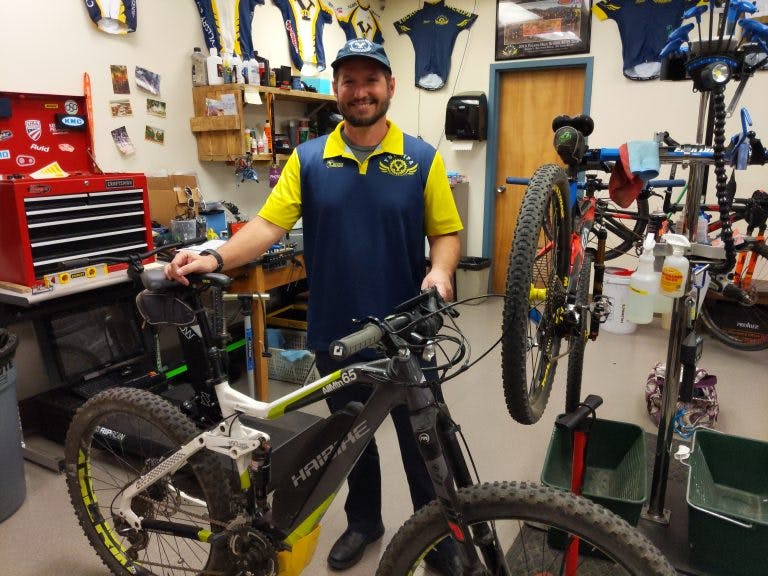Explore Our Network of Sites
Search
By:

When I started coaching high school mountain bike racing, I was 39 and fairly fast. I could keep the elite high school riders in my sights. Nine years later, with more coaching wisdom, experience and patience than ever, I can’t even ride alongside half the team to offer advice or keep riders within their prescribed workout.
I teach at Yucaipa High School in Southern California. Our league took several years to launch, but thanks to the Easton Foundation, help from NorCal league founder Matt Fritzinger, and support from industrious teachers and mountain bike enthusiasts, the SoCal High School Cycling League launched in spring of 2009. [It’s also now an official NICA chapter.]
Being involved in the birth of our league was a thrill, and I’ve been blessed to have some of my best friends as fellow teachers and mountain bikers. But, I’m starting feeling the wear and tear of years of coaching high schoolers — from countless rider behavior interventions, race ineligibilities, high school drama, evenings and weekends away from home, and, the saddest part: getting slower on the bike every season.
When electric mountain bikes became increasingly popular last year, I joined the chorus of scoffs from purists. But in the back of my mind, I knew that access to an e-bike might allow me to coach my faster kids again.
I’ve got more coaching wisdom, experience and patience than ever, but I can’t even ride alongside half the team to offer advice or keep riders within their prescribed workout.
Last month, our team training calendar included the dreaded over/under workout: A grueling climb to the top of Pisgah Peak that demanded alternating between five minutes of zone 4 steady-state agony [80–90% max heart rate], and two minutes of zone 5 time trial torture [90-100% max heart rate]. Back and forth, back and forth.
Every time we ran this working in previous seasons, the elite riders disappeared from my sight.
Two days before the over/unders, I called my ever-supportive local bike shop, Yucaipa Bike Center, and asked if they had a demo e-mountain bike that I could use during practice. Dale, the owner, told me he had a fully stocked, full-suspension e-mountain bike that I could demo for free, but the soonest I could use it would be on our annual Palm Desert Hahn Buena Vista ride: two miles of the steepest fire road in Southern California (affectionately known as “Puke Hill”).
I’m 48, but I’m an experienced cyclist and am in good shape for my age. All I need is a little something that can allow me to still work hard, keep up with my elite riders, and still have the breath to talk to them about their heart rate, their cadence or their body positioning. The electronic mountain bike does just that.
During the remainder of the ride, I was able to keep up with the elites, circle back and ride with other riders, and encourage the exhausted coaches. I felt like a world class pro head coach.
I wanted to be able to ride the entire three hours of the ride and stay with my elite riders. I did. I climbed Puke Hill (in economy mode) and stayed on our fastest rider’s wheel the entire two miles — and was able to talk in sentences while riding. During the remainder of the ride, I was able to keep up with the elites, circle back and ride with other riders, and encourage the exhausted coaches. I felt like a world class pro head coach. In the end, we rode 23 miles and climbed 4300 feet — and I still had 40 percent battery remaining.
Riding the eMTB energized me and made me feel like I could do this for a few more seasons (I was seriously facing burn-out). But eMTBs are expensive — the model I demoed retails for five-thousand dollars! So we’re planning a major pancake breakfast extravaganza to fundraise. If it works, then perhaps the man who introduced me to mountain biking, coached with me five years, started a team at another high school — and is twenty years my senior — may get inspired to raise the money so he can keep up with his kids, too.